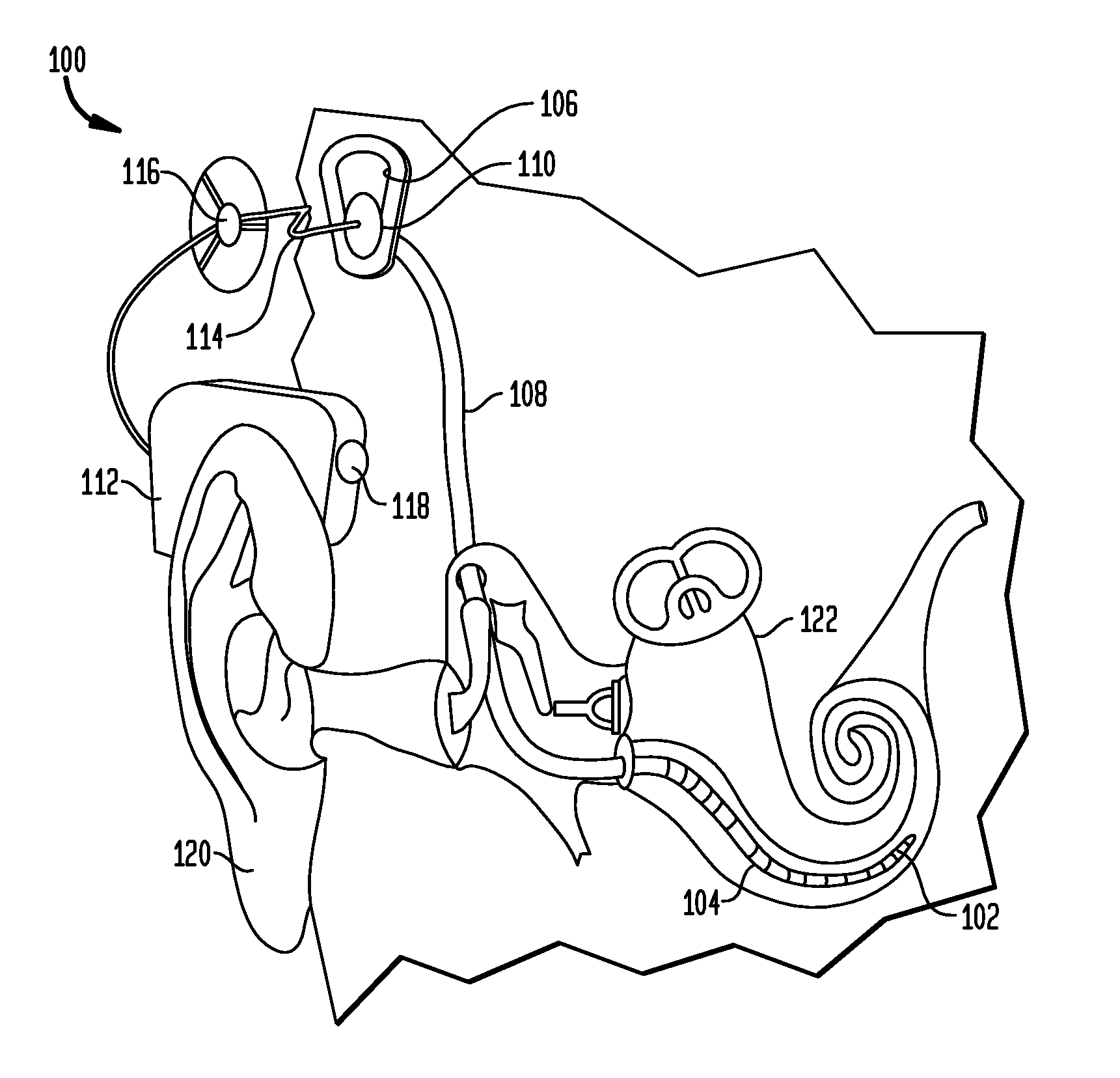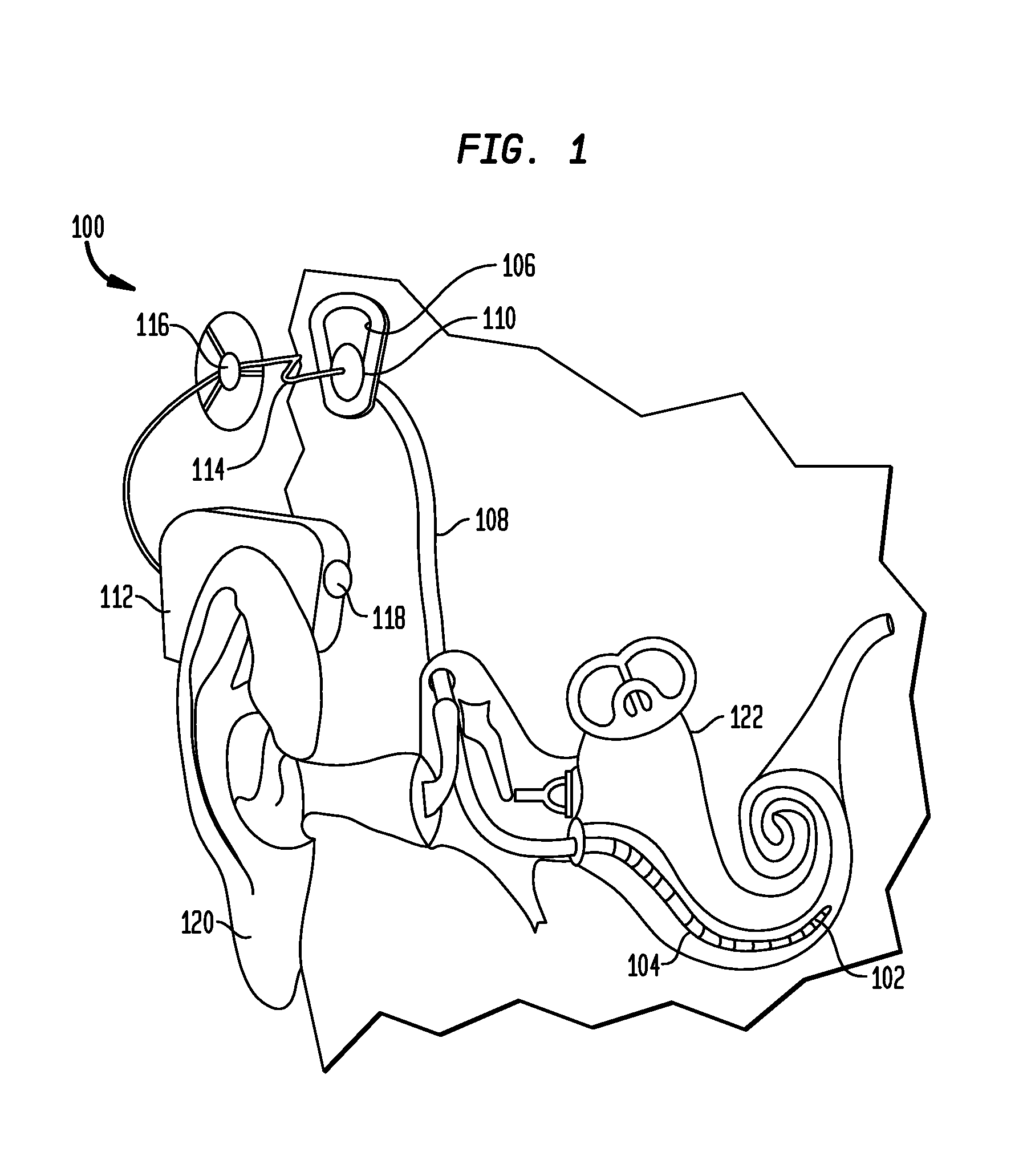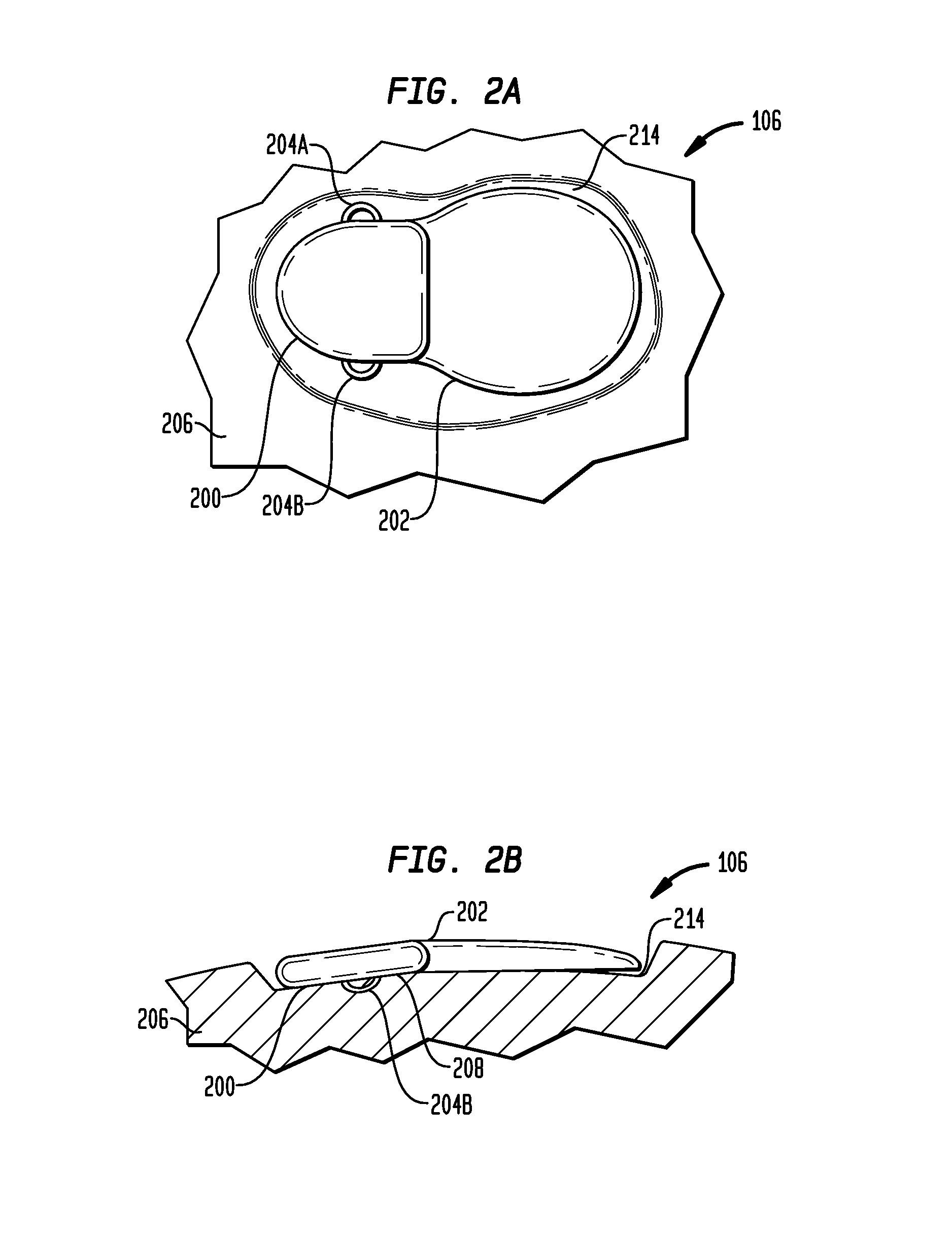Implantable device having osseointegrating protuberances
a technology of osseointegration and implanting protuberance, which is applied in the field of implantable devices, can solve the problems of time taken in the implant surgery to create the bed, the potential for the housing to shift out of the well, and the inability to achieve the techniqu
- Summary
- Abstract
- Description
- Claims
- Application Information
AI Technical Summary
Benefits of technology
Problems solved by technology
Method used
Image
Examples
Embodiment Construction
[0024]Embodiments of the present invention are directed to one or more osseointegrating protrusions extending from surfaces of an implantable device to secure the device to a bone. Osseointegration is a term commonly used to describe the process in which living bone forms a biological bond to an implanted element, firmly securing the implanted element to the skeletal structure. Osseointegration is thought to occur at a molecular level where the implant becomes part of the bone to which the implant has been mounted. There is a tendency for the formation of this structural connection to continue over time, further adhering the living bone to the surface of an implant.
[0025]Embodiments of the present invention are described below in connection with one type of implantable device, a cochlear prosthetic device. Cochlear prostheses use direct electrical stimulation of auditory nerve cells to bypass absent or defective hair cells that normally transducer acoustic vibrations into neural act...
PUM
 Login to View More
Login to View More Abstract
Description
Claims
Application Information
 Login to View More
Login to View More - R&D
- Intellectual Property
- Life Sciences
- Materials
- Tech Scout
- Unparalleled Data Quality
- Higher Quality Content
- 60% Fewer Hallucinations
Browse by: Latest US Patents, China's latest patents, Technical Efficacy Thesaurus, Application Domain, Technology Topic, Popular Technical Reports.
© 2025 PatSnap. All rights reserved.Legal|Privacy policy|Modern Slavery Act Transparency Statement|Sitemap|About US| Contact US: help@patsnap.com



